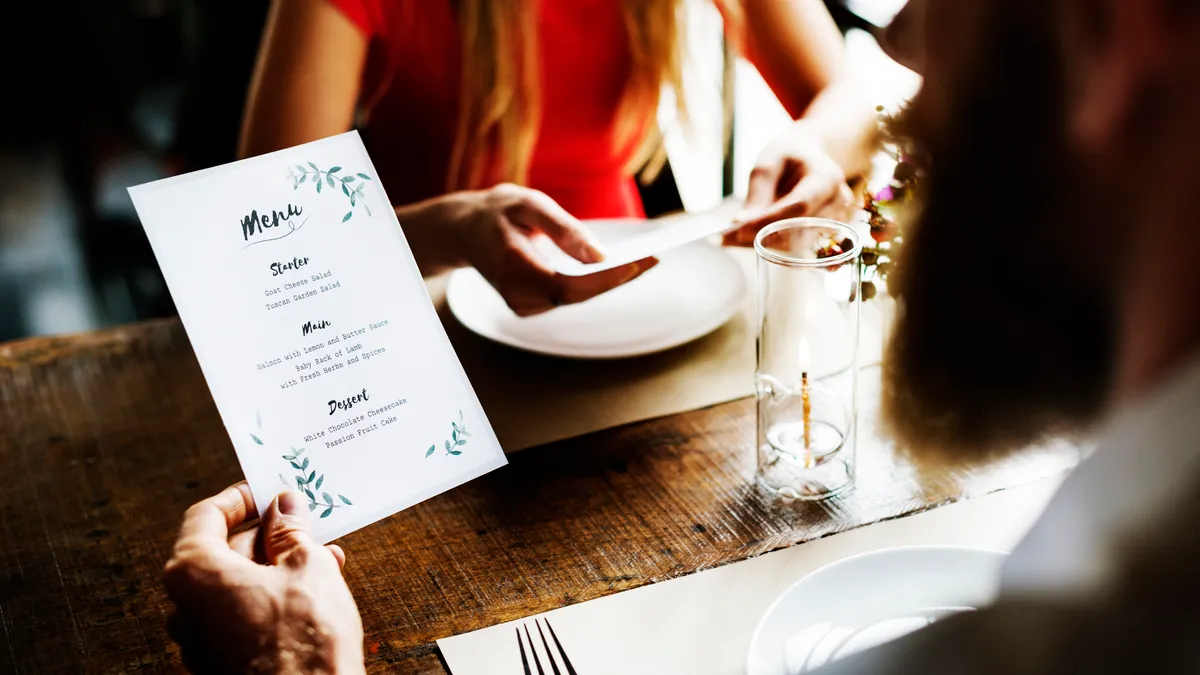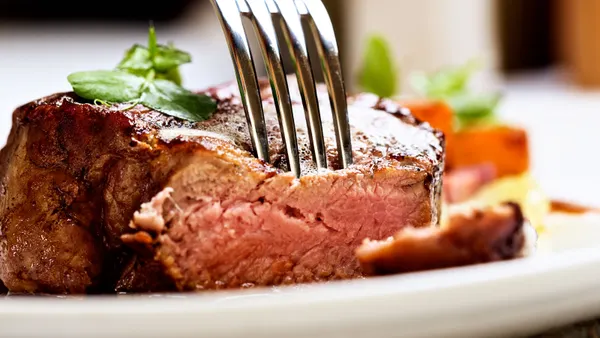A restaurant menu has a surprisingly heavy lift; as one of a diner’s first interactions with the establishment, it sets the tone for a memorable occasion. A well-designed menu can entice and engage guests, while one that’s hard to read or follow can lead to confusion.
“The entire restaurant encounter should create a lingering positive impression and that includes every touchpoint along the way,” explains Lisa Munson, corporate account manager for FedEx Office®. Here are some factors that can help make your menu as creative, appealing and integral to your reputation as your food.
Setting the stage: Why menus matter
While menu formats vary, often the basic design gives customers a clue of what to expect from their dining.
For example, at a diner, a customer is liable to be handed a laminated, multi-page booklet, with enough variety to suit all members of a party, often accompanied by vibrant photographs of the dishes. A bar might feature a tabletop placard with a short list of enticing snacks and drinks, whereas fine dining establishments usually favor a single sheet, often printed daily, which helps convey the freshness of the cuisine. The behind-the-counter menu boards typical of fast-casual establishments speed up ordering with their simplified explanations accompanied by bright graphics.
No matter the format, restaurant operators must ensure they’ve included the vital details that can help guests make an informed choice, from ample, picturesque descriptions to inviting visuals. And using premium printing is paramount to communicating the quality experience you pride yourself on.
Digital or print? Why the best answer in menu trends is “and”
While the pandemic ushered in a new appreciation for QR code menus, many diners still want to read a physical piece and Munson has noticed that most restaurants today are apt to accompany QR codes with an additional printed menu. These complementary formats can offer a variety of benefits to customers and restaurants alike.
Forgoing physical menus altogether could alienate some patrons, such as those who prefer not to use their smartphones while dining with friends. Linking to an online menu can also provide a less satisfactory experience, with small type and formatting that doesn’t translate well to a device’s small screen. The endless scroll makes it difficult for diners to consider all the choices or return to a dish that caught their eye as they compare appealing options. And of course, restaurants must be certain they have accessible WiFi.
Of note, one restaurant chain found their patrons preferred physical menus – and discovered that average checks were 70 cents higher when they used printed menus, a nice boost to overall profits when combined over time. Another statistic that might have you embracing printed menus: In a survey from financial services firm William Blair, 43% of respondents reported they are not comfortable using QR codes over a mobile device with only 20% saying they are highly comfortable.
Printed menus go beyond convenience, Munson says, as they can also act as a key sales channel. “They present an ideal way to call attention to seasonal offerings or bring that sense of freshness when customers are looking at daily specials,” she points out. “Highlighting must-try dishes can encourage diners to explore new tastes.”
And yet despite these benefits of a printed card, menu trends show that QR codes are likely to remain part of a restaurant’s strategy, partially because of their ability to help curtail costs. “Physical menus can be a significant expense, especially if a location is replacing them often,” Munson says. “That’s why we find our customers are extremely interested in FedEx Office products that help control costs, most notably our waterproof paper for menus that allow for multiple uses.”
For restaurants that want to revise their fare or prices with regular updates, yet don’t want a daily printing obligation, she mentions FedEx Office can supply quick options, such as easel-back menus, in addition to the traditional printing process.
“More and more when restaurateurs are considering the question of using a QR code for menus or a printed menu, they decide the optimal solution is to supply them in tandem,” she says.
Menu trends to improve experience and engagement
As menu trends continue to evolve, restaurant operators should ensure they are keeping pace. While the type of menu matters, so does the design. Munson cites the importance of high-quality printing to allow for legible typefaces, vivid graphic elements and crisp QR codes. In addition, establishments need to consider how their brand standards are carried through in their menus. “Ensuring an accurate color palette denotes the quality,” Munson points out, adding that one of FedEx Office’s key differentiators is daily color recalibration, which gives customers branded materials in a consistent way across the United States.
She also recommends using signage to complement QR code menus, allowing eye-catching visuals to draw attention to specials and lucrative add-ons. Finally, she recommends talking to FedEx Office about using more durable paper for menus, including water-resistant paper, to help keep costs low while retaining a superior product.
“As restaurants aim to provide excellent guest service, their menu strategy is just one more way to reflect their brand and differentiate themselves from competitors,” Munson says. “They want the customer to view their visit as a positive event from start to finish, through every touchpoint along the way.”
Are you ready to elevate your menu offerings? Find out more about how FedEx Office can be your solution provider for all your vital promotional materials, from menus to signage. Sign up today for a complimentary consultation.










